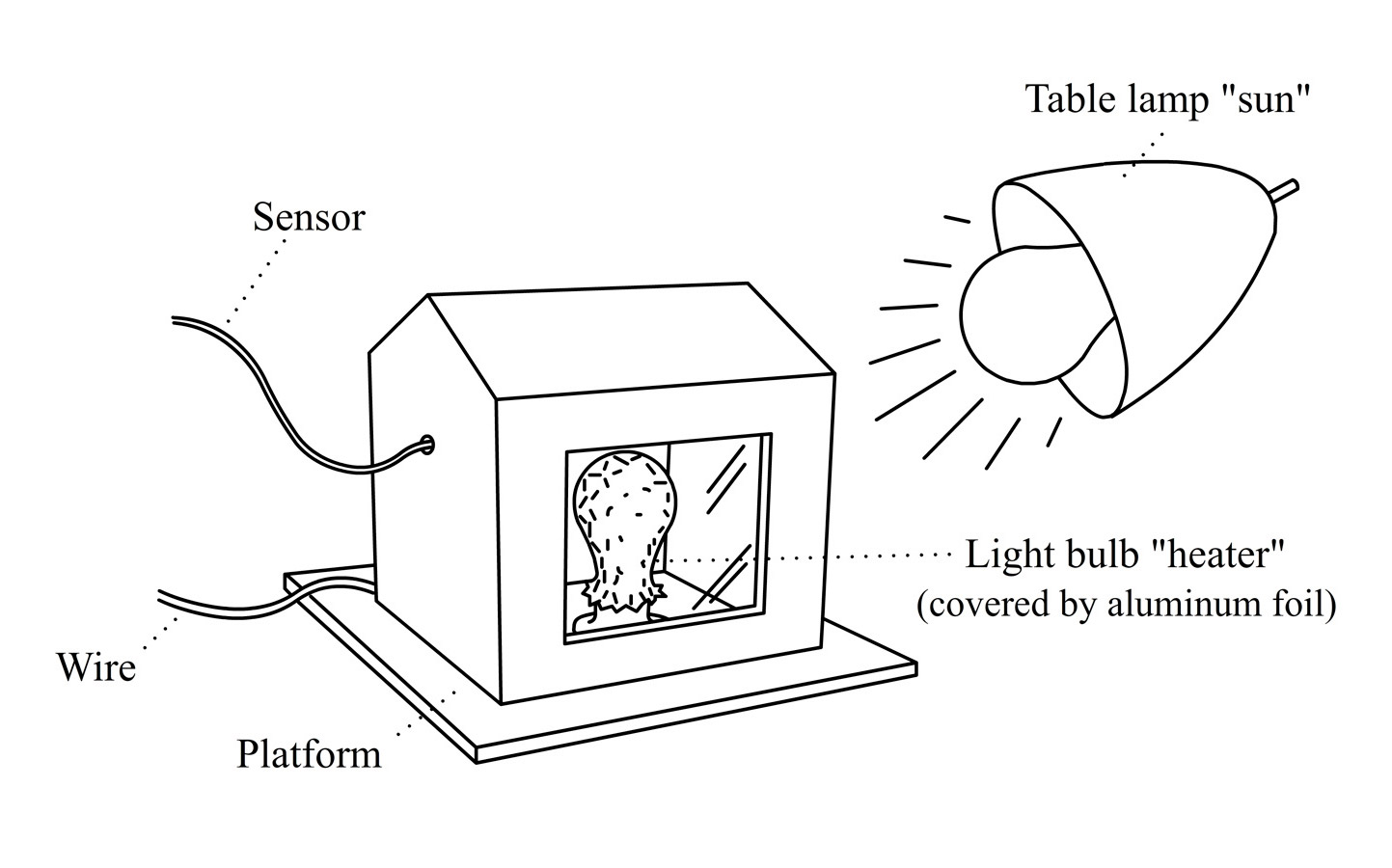Monday’s Lesson: Build and Test a Model Solar House
The “E” in STEM stands for engineering, of course. The importance of engineering education is now widely accepted, but it is not widely incorporated into the school curriculum. Teachers and students need more projects that are modest in length, tackle real-world problems, and are connected to science and math, as well as to engineering standards.

The Model Solar House, developed for the Engineering Energy Efficiency project, meets these criteria. Students explore the basic concepts of heat transfer and energy conservation in a real-world setting — home heating. In this three- to four-day activity, they use a template to build a simple house from cardstock and measure its heat loss. Then they repeat the test with added “solar” input to determine how much heat energy the sun contributes to keeping their house warm.
Getting Started
Materials for the Model Solar House are readily available — cardstock, foam core poster board (for insulation), acetate (for windows), scissors, and tape. A fast-response temperature sensor is essential, since it’s used to detect air and surface temperatures and must respond quickly. The parts for the heating source — a 40 W bulb in a standard socket — are inexpensive but require some assembly.
Human Thermostat
Heat flow requires a temperature difference. Since we can’t lower room temperature, the house is heated 10°C above room temperature to imitate a real-world outdoor temperature of about 10°C (50°F). This is sufficient to show dramatic differences, especially as the house design and insulation are improved.
| Team | No sun (watts) | With sun (watts) | Solar contribution (watts) |
|---|---|---|---|
| Polka Dots | 30 | 10.5 | 19.5 |
| 4 Reals | 38.4 | 30.8 | 7.6 |
| Myrtle Turtle | 20 | 14 | 6 |
| Matt & Sam | 25.2 | 16.7 | 8.5 |
| Cowboy Jim | 27 | 19 | 8 |
Almost all residential furnaces and boilers are constant-power sources: they’re either on or off. The amount of heating is adjusted by how much of the time they’re on, and this is controlled by a thermostat. In the Model Solar House, the 40 W bulb acts as the constant-power furnace. The bulb is covered in aluminum foil, which cuts down on radiative emissions (light and IR) so that almost all the heat energy is transferred to the air by conduction and convection. Students act as “human thermostats” by watching the temperature graph and turning the heater bulb on and off to keep their house temperature within a narrow comfort range (+/- 0.2°C). The percentage of time on multiplied by the bulb wattage gives the power requirement.
To mimic the sun, position a 300 W incandescent bulb in a gooseneck lamp about 20 cm away to the “south” of the house. Use solar noon for either a winter (90 – latitude – 23½°) or summer (90 – latitude + 23½°) condition. Leave the “sun” on while the heater bulb inside the house is cycled on and off within the comfort range. The difference in power requirement from the initial test gives the solar gain for the house.
Use a chart to compare student team results, and hold a discussion on the variations and the solar gain. (Note that students often like to make this a competition — that’s okay!)
Making Connections
The close analogy to real houses presents an opportunity for rich conversations. Students are often unaware of the basic features of their own house heating — type of fuel, type of heating system, how a thermostat works, house orientation, solar gain. Have them find their home heating bill, apply energy conversion factors (e.g., 400 gallons of oil multiplied by 130,000 BTU/gallon = 52 million BTU = 15,200 kWh), sort out the difference between power and energy, and deduct summer hot water heating (if the same source) to find their actual house heating energy consumption.
Extensions
In the full month-long curriculum, students design, construct, and test their own houses (with different shapes, roofs, number of windows, etc.), using the same simple materials. They also explore the various mechanisms of heat transfer — conduction, convection, radiation, and heat capacity — with hands-on or model-based experiments.
Try It Out
Go to concord.org/activities/model-solar-house to download the PDF version of this activity.
Edmund Hazzard (ehazzard@concord.org) is a science curriculum developer.
This material is based upon work supported by the National Science Foundation under grant DRL-0918449. Any opinions, findings, and conclusions or recommendations expressed in this material are those of the author(s) and do not necessarily reflect the views of the National Science Foundation.
